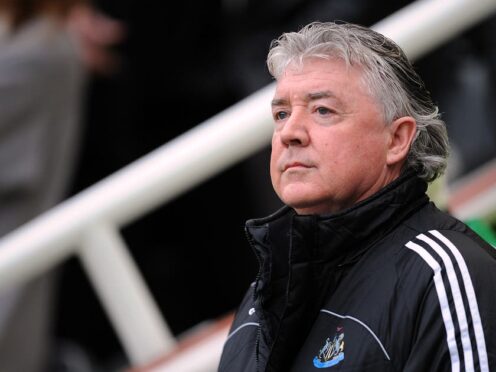
Joe Kinnear was a man who did things his own way.
As a dependable full-back, he served as a key member of a star-studded Tottenham side before embarking upon a managerial career which brought him huge acclaim with Wimbledon’s ‘Crazy Gang’, but ended in a hail of expletives, controversy and at times ridicule at Newcastle.
No slave to political correctness, Kinnear told it how he saw it and was admired and respected by those closest to him on a journey which began in Ireland and for the most part revolved around London, but notably also took him to Nepal.
Kinnear, who has died at the age of 77, was born Joseph Reddy, the youngest of three children to Guinness Brewery stoker Joe and Margaret Reddy, in Dublin on December 27, 1946, he and older sisters Shirley and Carmen spent their early years in the Kimmage and Crumlin areas of the city.
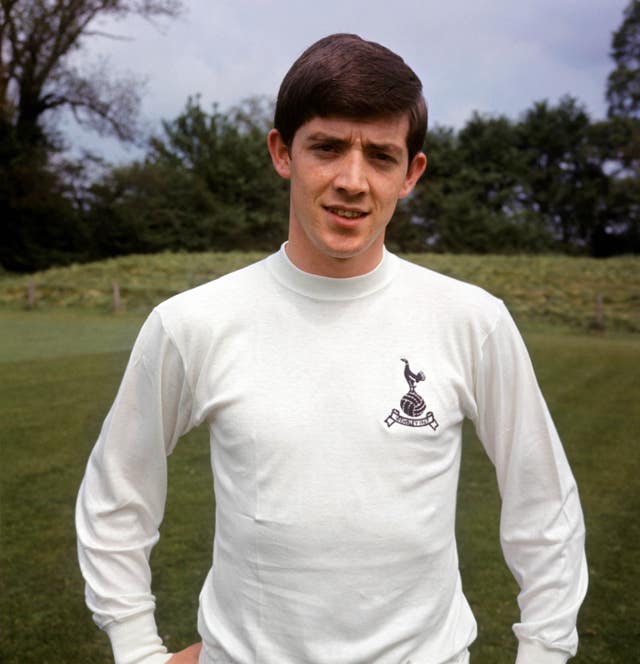
The marriage was not a happy one and his mother, who was just 20 when he arrived, eventually walked out and went to look for work in England, with her children – custody had been awarded to her husband – divided between their grandparents.
Having met and set up home with Gerry Kinnear in Watford, she returned for her children when her son was six and, along with the couple’s daughters Louise and Amelia, the Reddy children took on their stepfather’s surname.
Kinnear excelled at sports at both Kingswood Primary and Leggatt’s Way Secondary Modern schools, where his ability helped him be accepted swiftly.
A career as a professional was his dream from an early age and he looked to be on course when he played for and captained Watford Boys and then Hertfordshire Boys before being granted a trial by Watford at the age of 15.
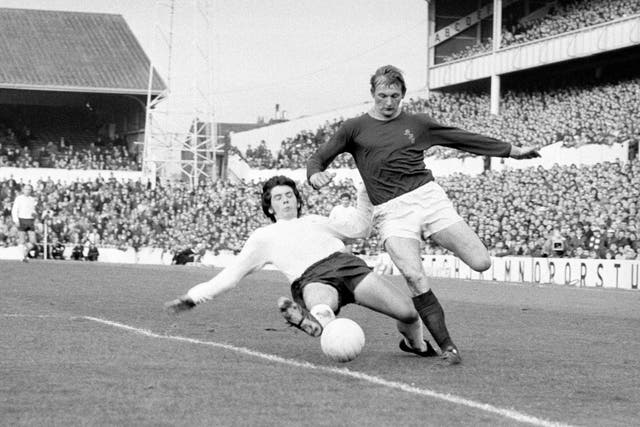
To his intense disappointment, the Hornets did not offer him a contract and, having left school with no qualifications, he took a job as an apprentice printer and played part-time for non-league St Albans City, where he was spotted by Spurs’ chief scout Dick Walker.
After a successful trial, he signed amateur terms with the club’s youth team, having been asked to switch from his accustomed right-half role to right full-back, and won his first professional contract at the age of 18.
Now rubbing shoulders with the likes of Danny Blanchflower, Dave Mackay and Jimmy Greaves, he made his senior debut under double-winning manager Bill Nicholson in a 4-1 home defeat by West Ham on April 8, 1966 and, a little more than a year later, was named man of the match in an FA Cup final victory over Chelsea.
In all, he made 258 appearances for the club, also winning the League Cup twice and UEFA Cup as well as 26 caps for the Republic of Ireland, although all trace of his accent had long since disappeared.
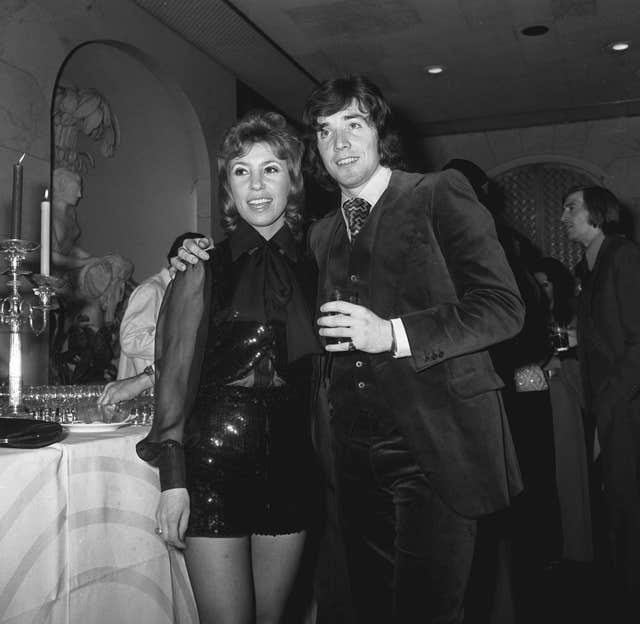
In the meantime, he had met wife Bonnie, with whom he had two children, Elliot, who died of cancer at the age of 40, and Russelle.
Nicholson’s resignation as his team started to slide signalled the beginning of the end for Kinnear at White Hart Lane and a move to third division Brighton in 1975 amounted to just 16 appearances as a knee ligament injury effectively ended his playing career.
Like many footballers at the time, he bought a pub, having earlier invested in two houses which he rented out, and took up a part-time coaching role with Southern League Woodford Town, later completing his coaching badges.
However, it was in the shadow of Mount Everest that he cut his teeth in earnest after being offered the eye-opening opportunity to coach the Nepal national team in their bid for qualification for the 1986 World Cup finals.
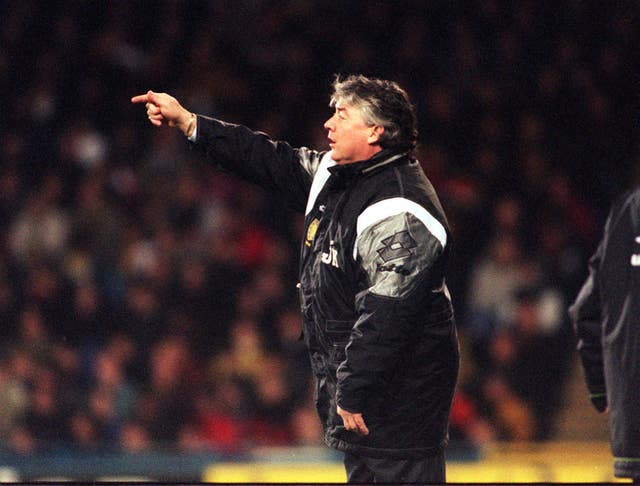
Spells with Sharjah and Al Shabab, where he worked under Mackay, in the United Arab Emirates followed, and he later followed the Scot to fourth division Doncaster and ultimately succeeded him on a caretaker basis, only for new owners to install former Leeds skipper Billy Bremner in his place.
It was with Wimbledon that Kinnear would finally make his name as a manager.
Initially recruited by FA Cup-winning boss Bobby Gould as his reserve team coach, he was handed the first-team reins in January 1992 following Peter Withe’s dismissal by chairman Sam Hammam.
With ‘Crazy Gang’ stalwart Vinnie Jones returning from Chelsea as club captain, Kinnear guided the Dons to sixth place in the Premier League in his second full season and three major semi-finals on modest resources, with his man-management skills and tactical awareness establishing an unbreakable bond with his players.
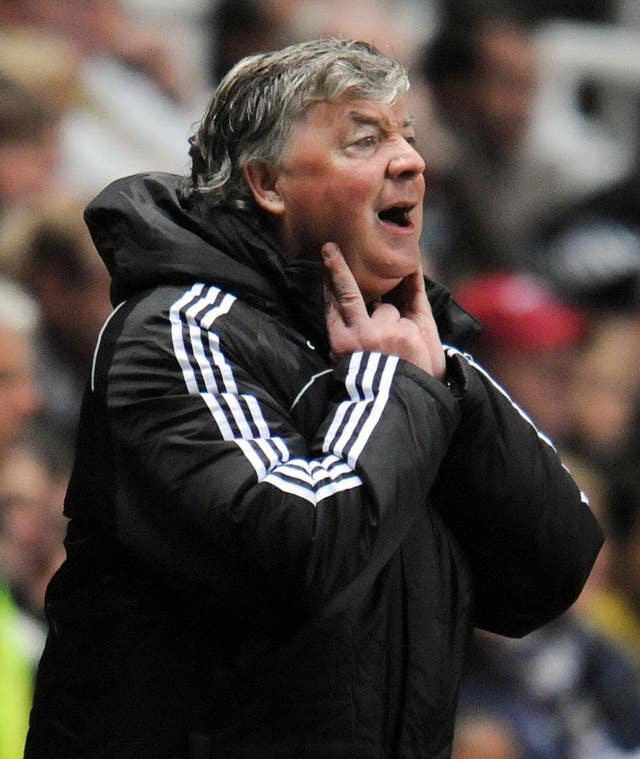
In March 1999 he suffered a heart attack and, in the aftermath, decided the time was ripe for change, despite Hamman having promised him a job for life.
A brief spell as director of football at Oxford was followed by an eventful reign at crisis club Luton and a difficult tenure at Nottingham Forest, although it was at Newcastle that he was catapulted back into the headlines.
Kinnear had been out of work for almost four years when, after an exhaustive search had failed to find a successor to manager Kevin Keegan following his departure in September 2008, controversial owner Mike Ashley asked him to take caretaker charge, to the fury of fans already in open revolt.
His first press conference descended into an expletive-ridden rant, in the process earning himself the nickname ‘JFK’, with no prizes for guessing for what the ‘F’ might stand for, and his subsequent appearances before the media were often entertaining, if not always factually accurate.

His reign proved short-lived when fresh heart problems forced him to step down, although Ashley turned to the Irishman for a second time in June 2013, this time as director of football, a move greeted by the city’s evening newspaper, The Chronicle, with the front-page headline: “What a joke.”
He lasted only seven months, tendering his resignation in February 2014 amid the fall-out over Yohan Cabaye’s £19million sale to Paris St Germain, significantly below the club’s valuation, and without having made a single permanent signing.
Kinnear dropped out of the spotlight in the wake of his departure from St James’ Park and his wife revealed in September 2021 that her husband had been living with dementia since 2015.

Enjoy the convenience of having The Sunday Post delivered as a digital ePaper straight to your smartphone, tablet or computer.
Subscribe for only £5.49 a month and enjoy all the benefits of the printed paper as a digital replica.
Subscribe